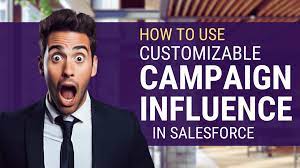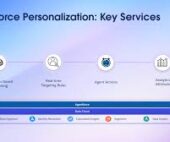How Customizable Campaign Influence Works
Customizable Campaign Influence in Salesforce enables businesses to track and assign revenue share to campaigns using both standard and custom attribution models. These models can be updated manually or through automated processes. By adding Customizable Campaign Influence data to related lists and reports, sales teams can better understand which campaigns are driving their opportunity pipeline.
How Influence Models Operate
Influence models scan active campaigns to identify members who have a contact role on an open opportunity. Based on this relationship, the model creates a campaign influence record. Influence can be assigned manually on an opportunity record or automatically via Apex triggers or the API. Once an opportunity’s stage is closed (won or lost), no new influence records are created.
Campaign Influence considers every campaign member, regardless of their status.
The Customizable Campaign Influence models use the Campaign, Opportunity, and Campaign Influence junction objects. Enabling this feature adds the standard objects CampaignInfluence and CampaignInfluenceModel to your org. You can then build reports or dashboards for any active influence model.
Access to Campaign Influence Records
Campaign influence records are visible through related lists and reports. A related list shows data from one model at a time, and you can set the default model for display. To allow users to add or edit campaign influence records from opportunity records, ensure the default model is custom and unlocked.
Note: In Salesforce Classic, the Influenced Opportunities related list shows an opportunity only if the influence is more than 0%. In Lightning Experience, opportunity records are displayed regardless of the influence percentage.
Standard vs. Custom Models
The default model is the Primary Campaign Source, which assigns 100% influence to the campaign listed in the Primary Campaign Source field on an opportunity. This model uses auto-association, so users cannot manually add campaign influence records.
Primary Campaign Source model influence records are recalculated when:
- Any Customizable Campaign Influence setting is changed
- An opportunity’s Close Date changes
- A member is added to or removed from a campaign
- An account or opportunity is deleted or undeleted
If the Primary Campaign Source model doesn’t suit your needs, you can create custom models. Users can manually add or edit an influence percentage in the Campaign Influence related list on an opportunity record. Custom models are unlocked by default, allowing users to update records themselves. Locked custom models accept updates via API only.
Note: Opportunities added by the primary source campaign field appear in Campaign Statistics only when the Primary Source Campaign model is set as the default. With other models, the value shows opportunities added by auto-association only.
Customizable Campaign Influence
To preserve opportunity data, custom campaign influence records aren’t deleted when the associated campaign is deleted. You can delete campaign influence records from the Opportunity related list or via the API.
Auto-Association Settings
Customizable Campaign Influence models use auto-association based on your criteria, such as time frame and campaign types, with additional filters using standard fields. The same settings apply to all models. You can set an auto-association time frame in Setup to define when a member-contact relationship is considered influential.
To allow users to assign influence percentages, create a custom model. Both default and custom models can use auto-association rules based on standard and custom fields.
Additional Campaign Influence Models for Marketers
For users of both Sales Cloud and Account Engagement, additional models like first touch, last touch, and even distribution can be enabled. These models support auto-association rules using standard fields only.
Additional Models:
- First-Touch: Assigns 100% of influence and revenue to the first campaign a prospect engages with, based on the campaign member’s Created Date. For Account Engagement users only.
- Even-Distribution: Assigns an equal percentage of influence and revenue to every campaign a prospect engages with. For Account Engagement users only.
- Last-Touch: Assigns 100% of influence and revenue to the last campaign a prospect engages with before closing a deal, based on the campaign member’s Last Modified Date. For Account Engagement users only.
If these additional models aren’t enabled, only the Primary Campaign Source model and custom models are available.













